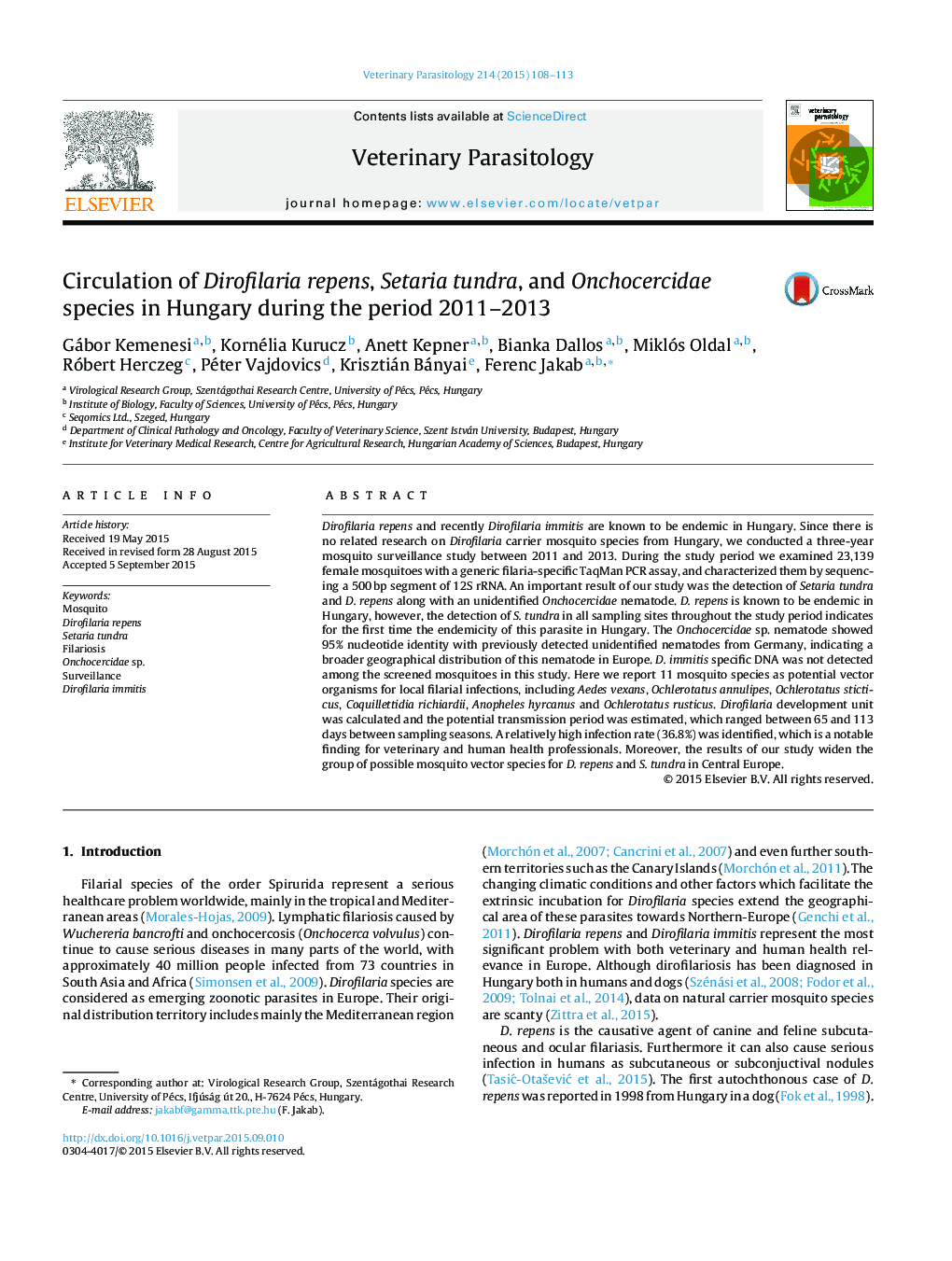| کد مقاله | کد نشریه | سال انتشار | مقاله انگلیسی | نسخه تمام متن |
|---|---|---|---|---|
| 5802245 | 1555663 | 2015 | 6 صفحه PDF | دانلود رایگان |

- Dirofilaria immitis was not detected during the study.
- We revealed a wider distribution for Setaria tundra in Europe.
- An unidentified Onchocercidae species has been detected.
- High prevalence of Dirofilaria repens has been observed.
- Novel potential mosquito vector species were described for S. tundra and D. repens.
Dirofilaria repens and recently Dirofilaria immitis are known to be endemic in Hungary. Since there is no related research on Dirofilaria carrier mosquito species from Hungary, we conducted a three-year mosquito surveillance study between 2011 and 2013. During the study period we examined 23,139 female mosquitoes with a generic filaria-specific TaqMan PCR assay, and characterized them by sequencing a 500Â bp segment of 12S rRNA. An important result of our study was the detection of Setaria tundra and D. repens along with an unidentified Onchocercidae nematode. D. repens is known to be endemic in Hungary, however, the detection of S. tundra in all sampling sites throughout the study period indicates for the first time the endemicity of this parasite in Hungary. The Onchocercidae sp. nematode showed 95% nucleotide identity with previously detected unidentified nematodes from Germany, indicating a broader geographical distribution of this nematode in Europe. D. immitis specific DNA was not detected among the screened mosquitoes in this study. Here we report 11 mosquito species as potential vector organisms for local filarial infections, including Aedes vexans, Ochlerotatus annulipes, Ochlerotatus sticticus, Coquillettidia richiardii, Anopheles hyrcanus and Ochlerotatus rusticus. Dirofilaria development unit was calculated and the potential transmission period was estimated, which ranged between 65 and 113 days between sampling seasons. A relatively high infection rate (36.8%) was identified, which is a notable finding for veterinary and human health professionals. Moreover, the results of our study widen the group of possible mosquito vector species for D. repens and S. tundra in Central Europe.
Journal: Veterinary Parasitology - Volume 214, Issues 1â2, 30 November 2015, Pages 108-113